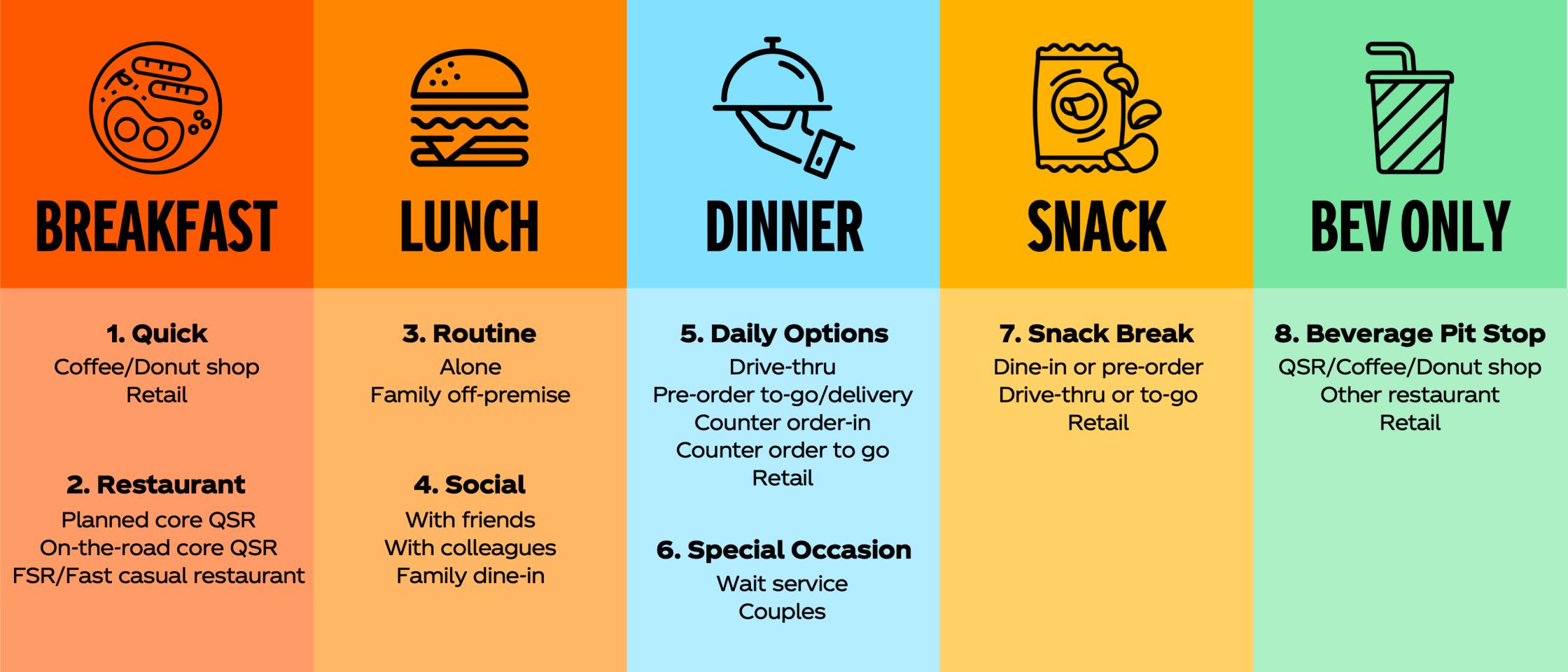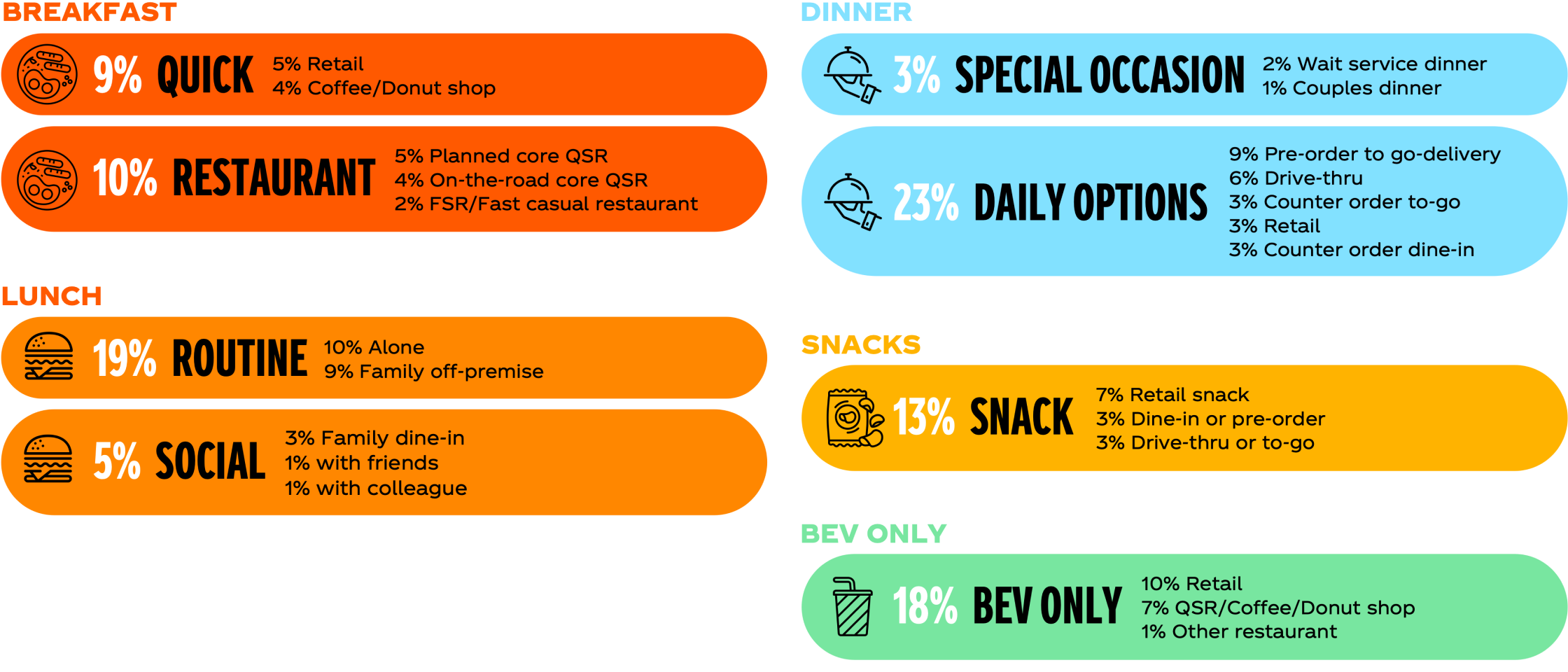
MAY 2024
Specificity is the key to unlocking opportunities within trip-based segmentation.
The benefits of getting specific
Rooted in segmentation methodology, the meal missions were created to evolve and deepen our understanding of restaurant trips beyond service mode and meal type. Meal type is most influential for when a visit will happen, while the other five factors shape where and how to optimize the visit.
STANDARD INDUSTRY
Occasions
An industry standard “one-size-fits-all” model generally uses only two data variables to identify customer growth areas.
Variables:
- Service Mode
- Meal Type
Why this may not work:
Too high level and misses areas of differentiation
COCA-COLA®
Meal Missions
Coca‑Cola’s new multi-dimensional model that uses six data variables from DINE360 plus analytical modeling/clustering to divide visits into uniquely targetable meal missions.
Variables:
- Service Mode
- Meal Type
- Channel
- Planned/Unplanned Visits
- Order Method
- Trip Companion
Why this works:
This approach acknowledges trip differences at a more granular level (experiential, behavioral, and physical) and makes them more targetable.
8 Segments & 23 micro-segments
While there are only eight segments, those segments go further into 23 different microsegments—defined by even more granular and actionable level.

No meal mission—macro or micro—dominates the trip landscape

Source: Coca‑Cola DINE360 Survey, Annual 2022 (12 Month end December)
Uncovering trends
By breaking down occasions into such specific segments, we can track changes in each area.
For example, the onset and lingering effects of the pandemic unfolded in unique ways through multiple segments. Pre-order to go and delivery dinner spiked during the pandemic but continued to remain high even after the pandemic.
Ensure the tactics you've implemented are sustainable long term and not simply reactionary to how rapidly this space arose. Meal Missions allows Coca‑Cola to spot evolving trends more effectively, giving the opportunity to grow together. ■

Source: Coca‑Cola DINE360 Survey, Annual 2019-2023 (12 Month end December)
WANT TO SEE MORE?
Discover more through the lens in the articles below.